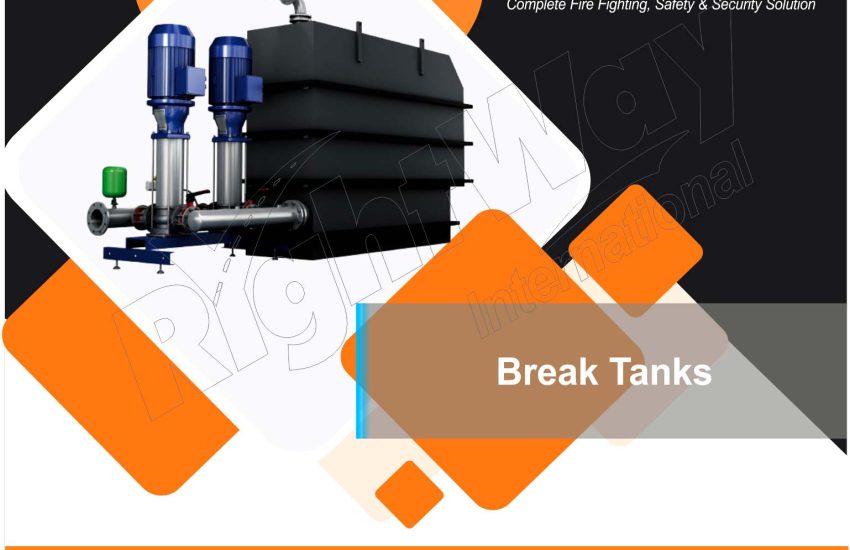Break tanks are intermediate storage tanks used in water supply systems. They prevent backflow and maintain water pressure. These tanks act as a buffer between the main water supply and the distribution system, ensuring water is readily available for firefighting, irrigation, and general use in commercial and industrial settings.
How Break Tanks Work ?
Water Storage
Break tanks receive water from various sources, such as municipal supplies, wells, or treatment facilities. They store water to ensure a consistent supply, especially during peak demand.
Pressure Regulation:
Break tanks include pumps that maintain appropriate water pressure for downstream applications. This is essential for systems requiring a steady flow, such as fire protection systems.
Backflow Prevention:
By acting as a buffer, break tanks prevent backflow into the main water supply. This is crucial for maintaining water quality and meeting health regulations.
Automatic Filling:
Many break tanks have float switches that automatically control the filling process, keeping the tank at the required level.
Applications of Break Tanks:
Break tanks are used in various settings, including:
- Fire Protection Systems: They provide a reliable water supply for sprinklers and fire hydrants, especially where municipal pressure is inconsistent.
- Irrigation Systems: Break tank ensure a steady flow of water for agricultural and landscaping needs, particularly in areas with variable water availability.
- Industrial Processes: They supply water for manufacturing, cooling systems, and other applications where pressure and quality are critical.
- Commercial Buildings: Break tank support water needs in offices, hotels, and shopping centers where demand fluctuates.
Advantages of Break Tanks
Enhanced Water Pressure
By regulating pressure, break tank ensure downstream systems operate effectively, reducing the risk of failures.
Water Quality Protection
They prevent contamination from back flow, ensuring the supplied water meets health and safety standards.
Flexibility
Break tank can be customized in size and design to fit various applications, making them versatile for different industries.
Cost Efficiency
By improving water distribution and minimizing shortages, break tank contribute to overall cost savings in water management.
Challenges and Considerations
Maintenance
Regular inspections and maintenance are necessary to keep the tank and equipment functioning properly and free of contaminants.
Regulatory Compliance
Break tank must comply with local health and safety regulations, including backflow prevention and water quality standards.
Installation
Proper installation is crucial for the system’s effectiveness, considering location, size, and connections to existing water supply lines.
Conclusion
Break tank are essential in water supply systems, providing reliable storage, pressure regulation, and backflow prevention. Their versatility suits various applications, from firefighting to irrigation. Understanding their operation, advantages, and maintenance needs is key for optimizing water management strategies. By ensuring proper installation and compliance, break tank can enhance efficiency and safety in water distribution systems.


